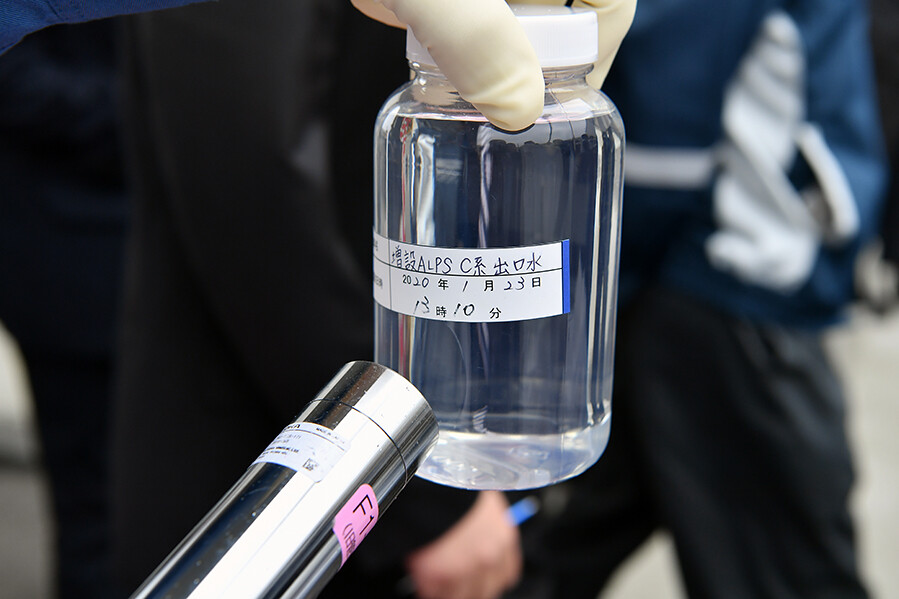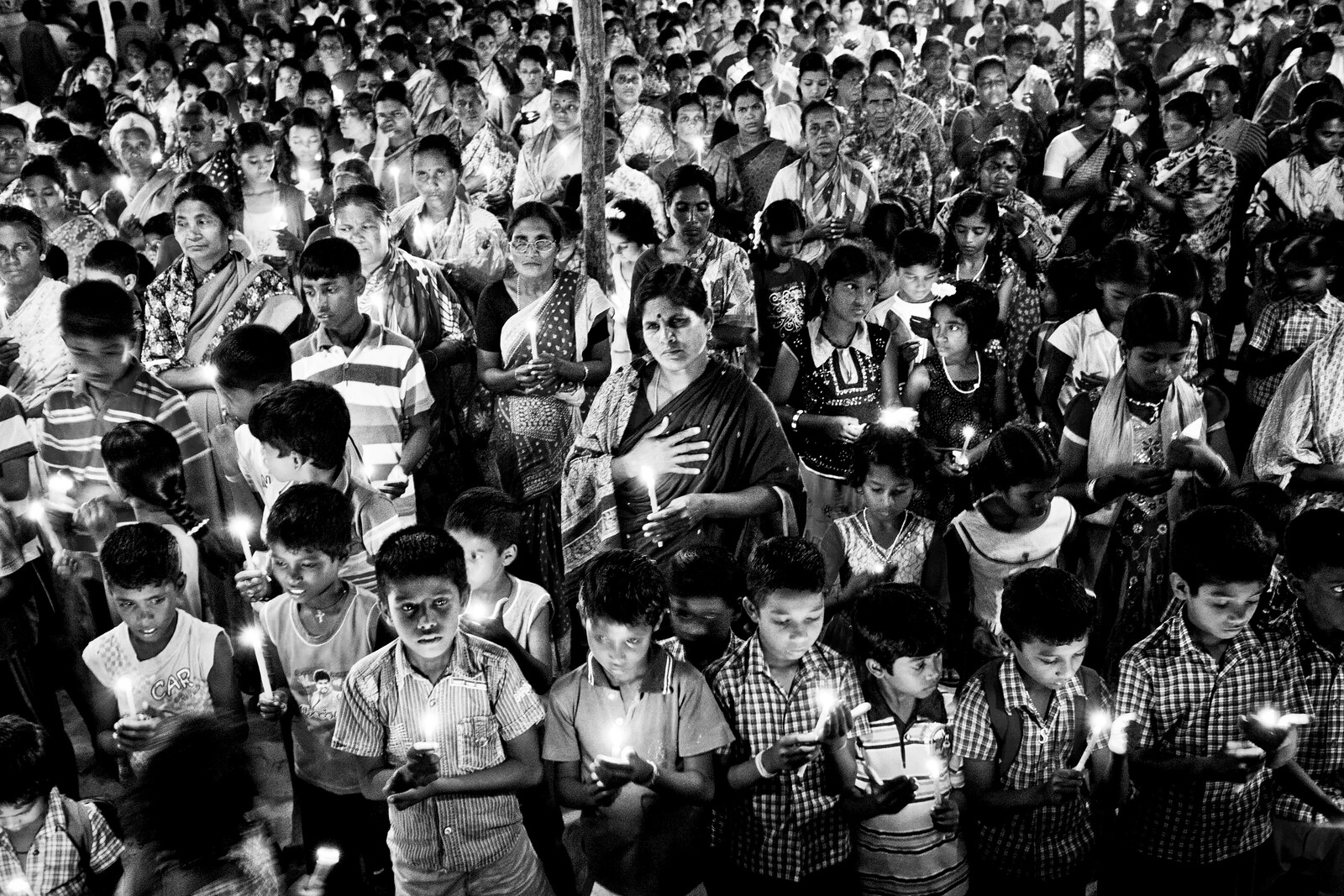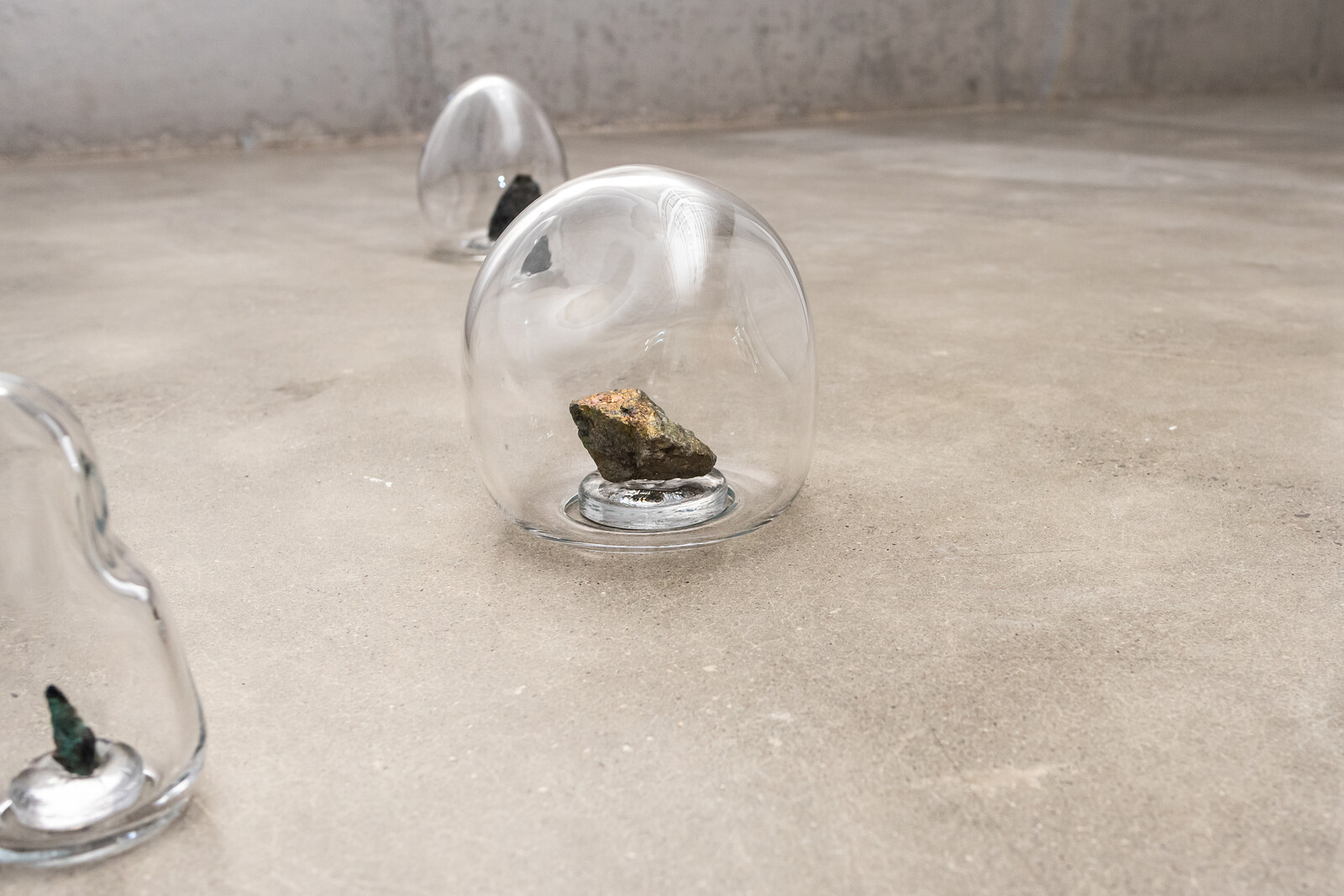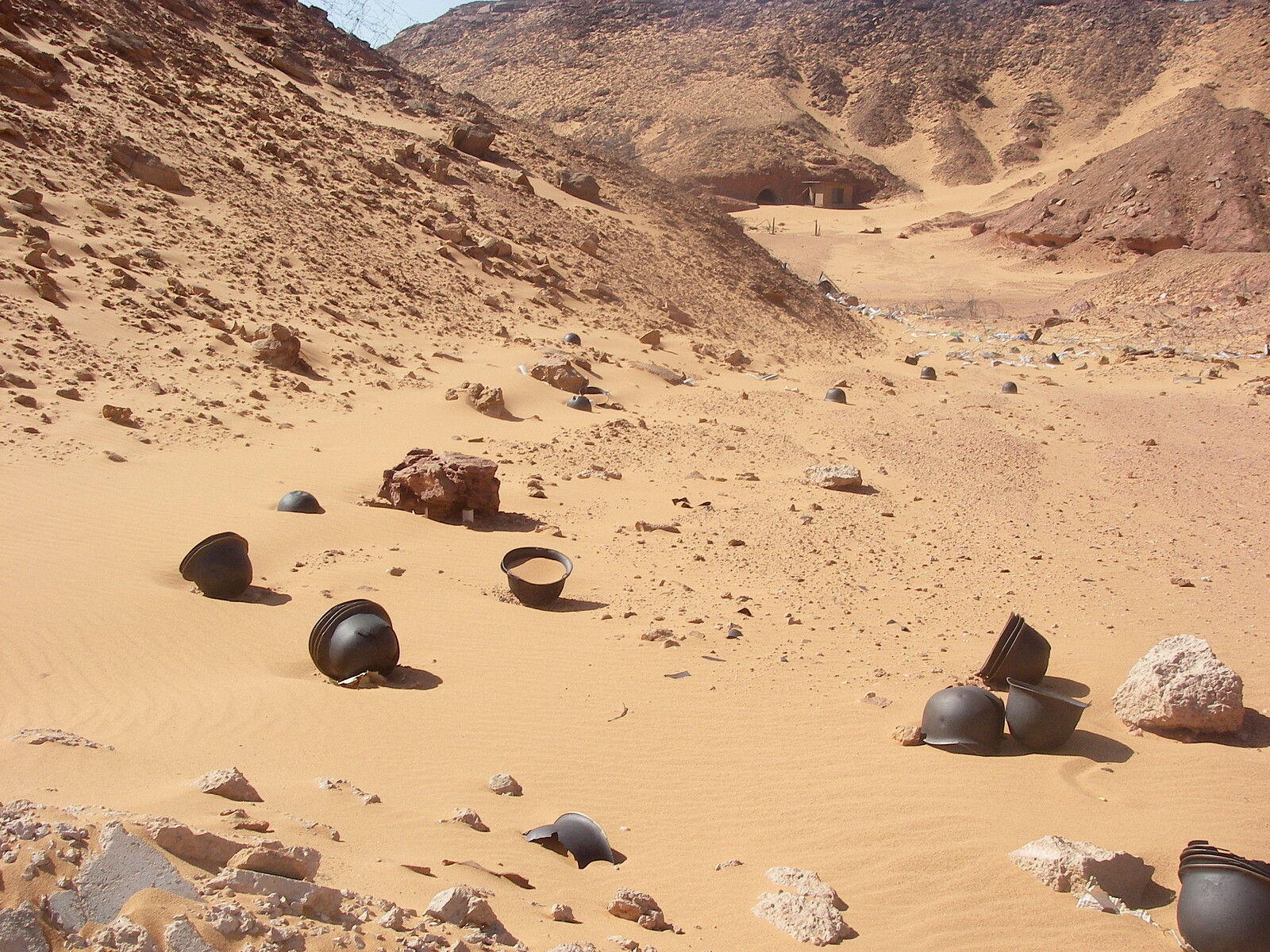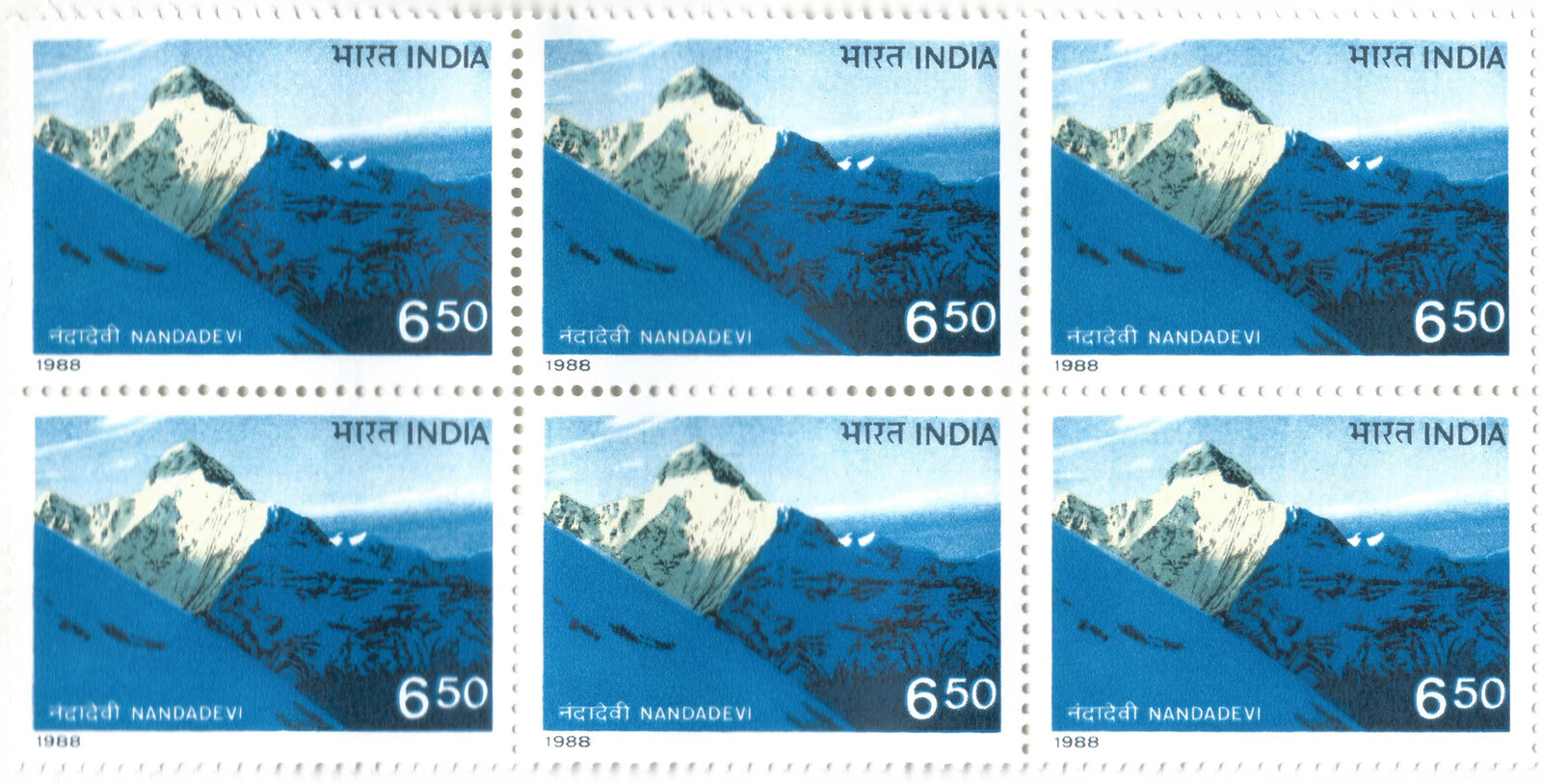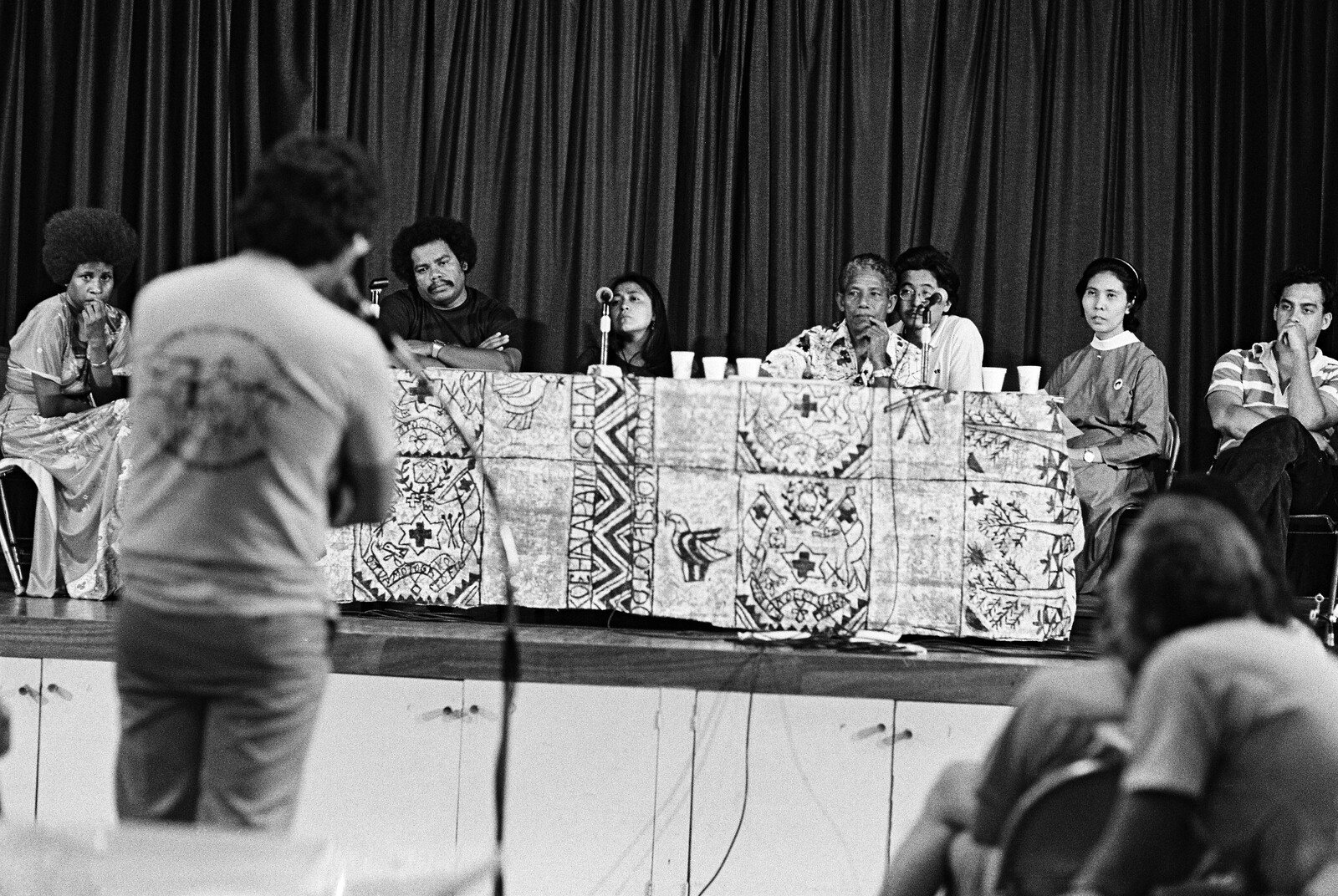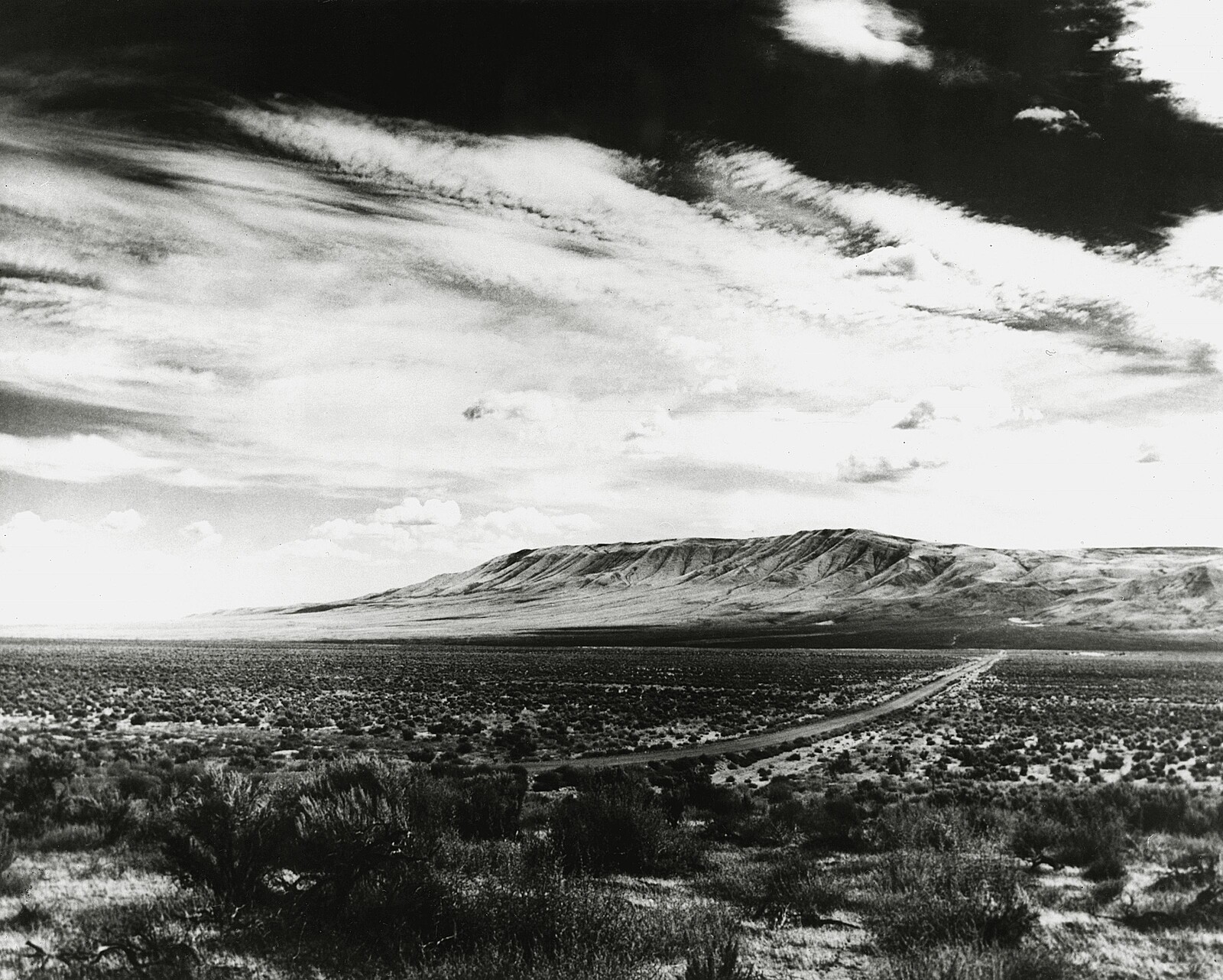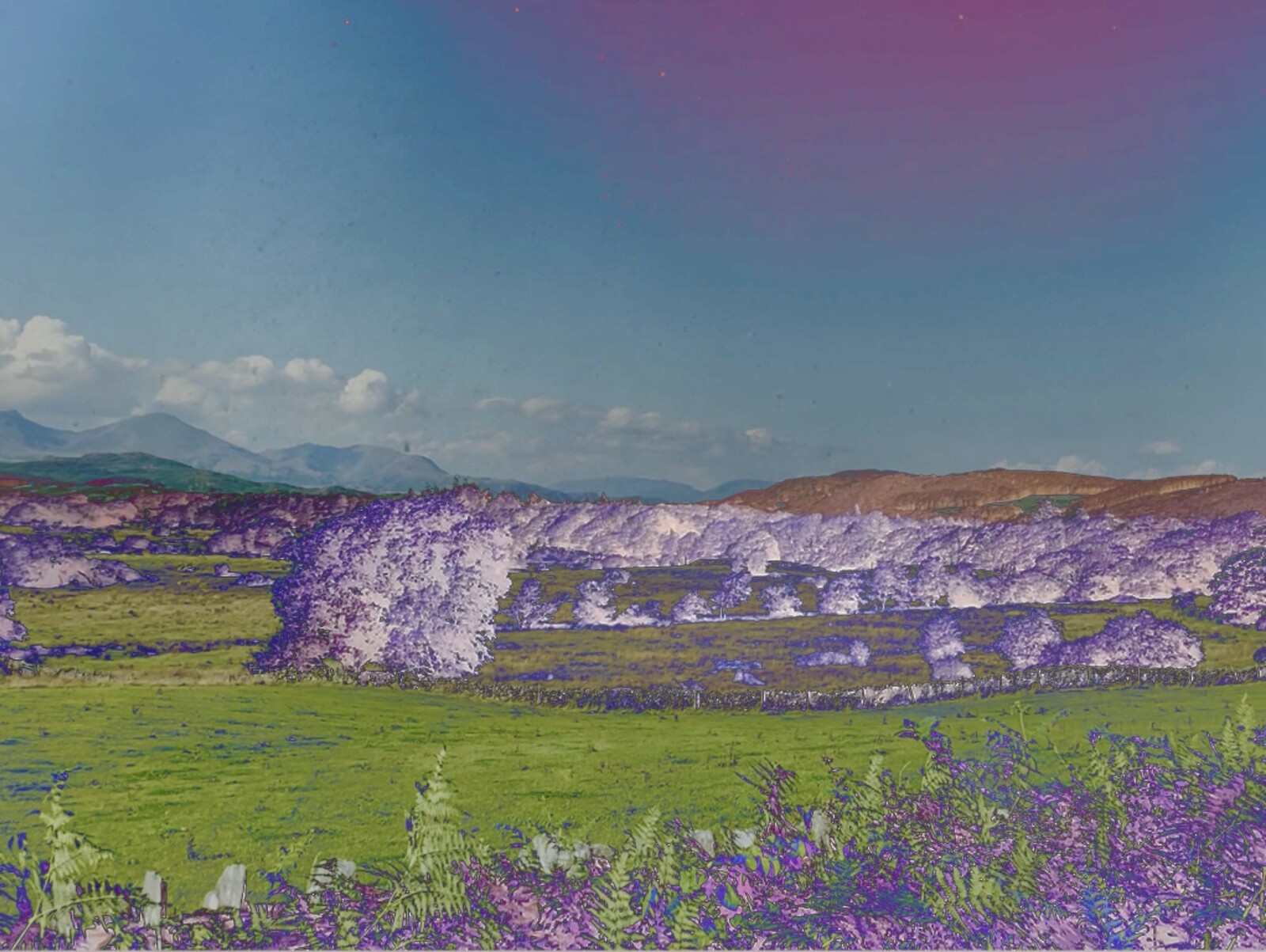September 2021: I find myself in a dusty corner of New Mexico to see one of the wonders of the American West: the Waste Isolation Pilot Plant (WIPP) in Carlsbad, New Mexico, the United States’ only deep geologic long-lived radioactive waste repository. We drive south from Albuquerque along deserted roads and past long-abandoned construction. The land here is dry, with reds and oranges unfurling under a wide, hot, neon blue sky. Rolling hills of craggy rocks and scrabbly soil are populated by ocotillo, a drought-tolerant creosote bush, and tarbush, another calcareous soil-dwelling plant. The Rio Grande snakes through the desert, sharp as a knife’s edge. A thin tree zone outlines its water in stark green relief against the arid stones. Just past this verdant band, limber bush, resurrection fern, and candelilla grow in the unusual, shallow soil of limestone pavement.1 There are plants found nowhere else but here, in the Chihuahuan desert, such as the living rock cactus. As even the names of plants suggest, birth and death are inescapable in the desert.
Time seems to misbehave in the desert. Its shifting sands are infinite, and yet, the deep history of those who have called this place home is closer to the surface in these open spaces. Earlier this year, the oldest human footprints in North America were discovered—23,000 years old—in White Sands National Park (formerly White Sands National Monument). These footprints point to the deep history of not mere survival, but life.2 Indeed, this desert has never been empty.3 And if the Anthropocene asks how unlivable environs may be before they truly stop supporting life, nuclearity distills this question even further. But the desert poses an answer.
These tensions come to a head in White Sands National Park, which contains the Trinity Site, where, on July 16, 1945, the sublime desert landscape lit up with the glow of the world’s first nuclear detonation. Nestled next to White Sands is Holloman Air Force Base, and encompassing the surrounding landscape is White Sands Missile Range (WSMR). WSMR is the Department of Defense’s largest open air missile range, and proudly purports to be the “world’s premiere research, development, test, evaluation (RDT&E), experimentation, and training facilities” provider.4 The sacred and pristine landscapes of New Mexico stand in stark contrast to the machinations of the US Military and Department of Energy.


Mid-afternoon in White Sands National Park. Image courtesy of author.
White Sands is a shimmering desert that is visible from miles away. And as a national park, the landscape is defined by its ecology, geophysical properties, and historical evolution. This is a place that should be protected, the park system tells us, even while all around it the science of destruction is perfected. The role of militarized radioactivity in shaping the landscape is made invisible in the park’s narrative of pristine wilderness. But that’s what it is: a landscape of militarized radioactivity. The presence of WSMR highlights the way in which the logics of sacrificial and preserved ecologies compete for authority over the same desert landscapes.5
The tension between the parallel universes of military infrastructure and majestic nature is palpable all over the state, but perhaps most of all in Carlsbad. Our destination there is not the WIPP site itself, which does not allow visitors, but rather its outer-facing extremity: the visitor center. Yet this destination eludes us, again and again. We drive the same dusty stretch of highway in circles, looking for an address that our GPS alleges is next to us, but does not seem to exist on the ground. We pass a trailer park with fluorescent green hydroponic landscaping blaring against the red dust around it. Nearby, kids play a listless game of soccer on the rocky earth.
On our third loop through this stretch of road, we turn the corner onto an unmarked road that seems to double as a driveway. A low, sprawling brick building comes into view. It is unremarkable from a distance, but towering over the cars in the parking lot are nuclear waste barrels, giant and silver, glinting dully, announcing our successful arrival. Inside the brick building the air is still, dense, and air-conditioned; a sharp contrast to the heat outside, already heavy on my skin at 10am. The glass doors open into a banal office space, incongruously corporate against the backdrop of rural New Mexico. One person is working behind the desk. Confused when we ask about the visitor center, they encourage us to leave as soon as possible.
The uncertainty of finding this place, the ostensibly visible arm of an invisible operation, speaks to the much larger inconsistency internal to the WIPP project: it is meant to be both remembered and forgotten; tended to, but maintained as a non-entity. After finding the site, the inconsistencies only multiply, for the fractal nature of its nuclearity raises as many questions as it pretends to answer. To start, the information presented at the visitor center—the history of the site, the accolades granted to various governmental figures responsible for its creation, even the robust infrastructure developed to consolidate a vast nation’s waste in one place—made no reference to the lifespan of nuclear waste—the entire purpose of the facility—the future of the site, or its surrounding communities.
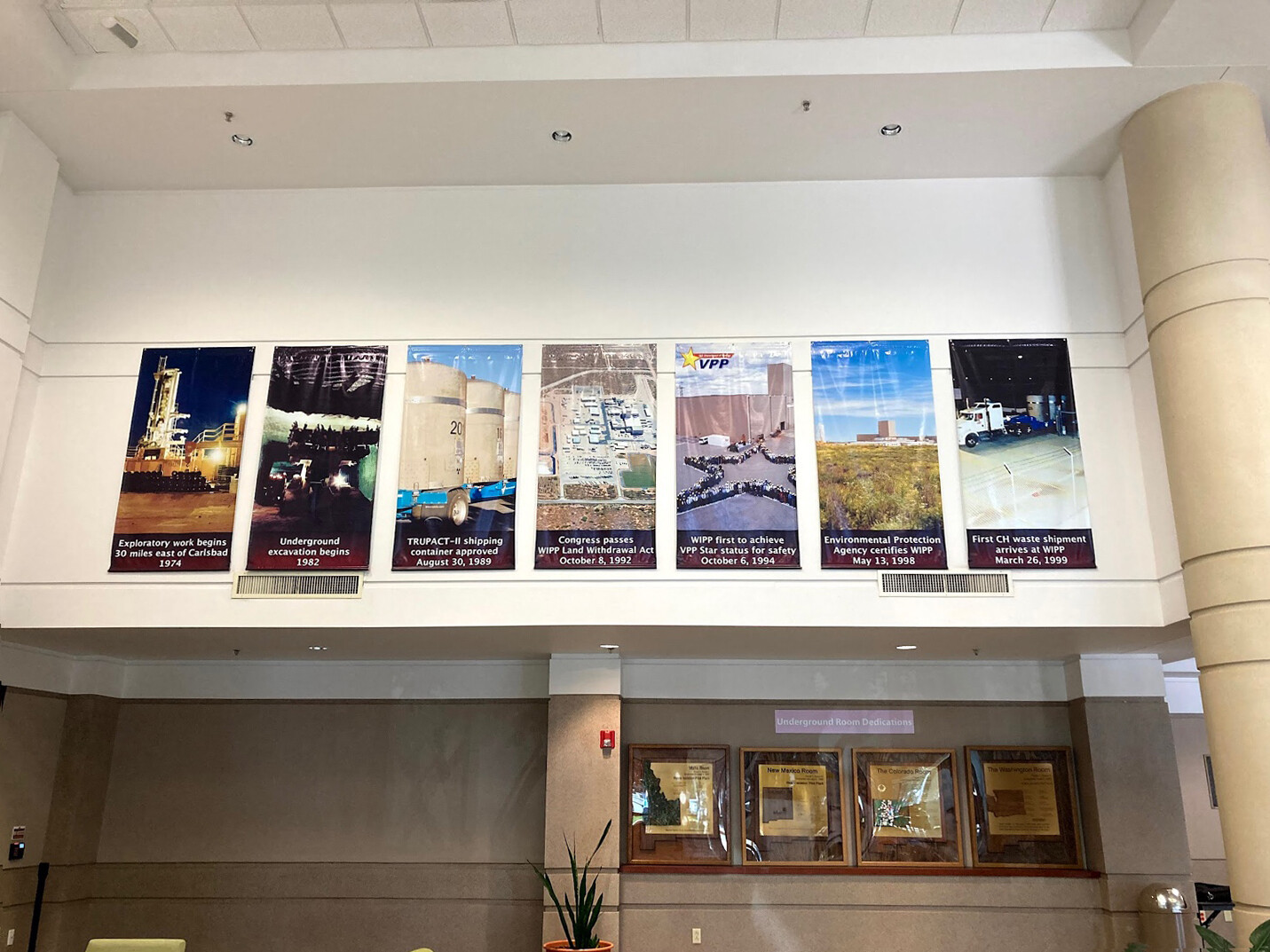

Informational banners at the WIPP visitor center, Carlsbad. Image courtesy of author.
This complicated non-place in a seemingly forgotten corner of a “primordial” desert is a Deep Geological Repository, or, in other words, a very big hole in the ground. Dug in the shallow sand flats a few miles from the Guadalupe Mountains, the site was chosen after the National Academy of Sciences identified salt deposits as feasible repositories for nuclear waste disposal. Experimental drilling began in 1974 and, five years later, Congress authorized its construction. In 1999, the first shipments of defense-generated waste arrived. By 2035, it will reach maximum capacity, at which point it will be sealed.
The very prospect of sealing away nuclear waste for 10,000 years—of daring to imagine in concrete and unflinching terms the very fabric of the world in such an impossibly far away future—is a tantalizing design brief. Since the 1970s, there have been ongoing efforts across disciplines in the United States to imagine our radioactive legacy. For example, the Atomic Priesthood concept, proposed by Thomas Sebeok and Alvin Weinberg, imagines culture—as opposed to structures or signs—as the vehicle through which ideas could travel through deep time.6 Conversely, Spike Field, by Michael Brill, also departs from the idea of signage, and instead suggests that the design of the landscape itself can become affectively legible.7 Yet beyond the problem of communication is the question of why, and for whom, we are so invested in this effort.
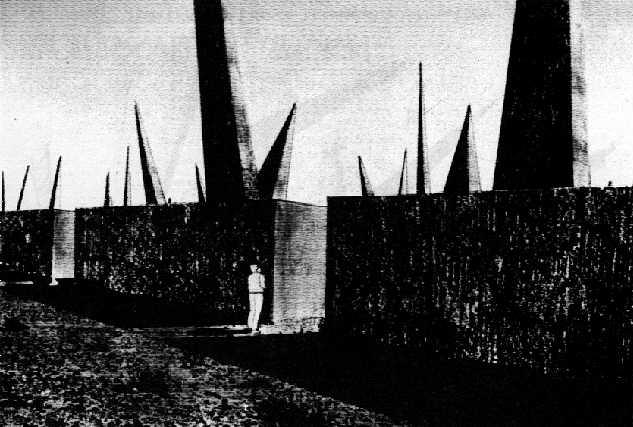

The “Spike Field” concept. Art by Michael Brill. Source: Sandia National Laboratories.
In the 1990s, the Sandia National Laboratory (SNL) presided over the monumental task of maintaining the future security of the WIPP site. As part of a necessary regulatory process imposed by the Environmental Protection Agency, SNL created a lengthy dossier outlining the risks of “inadvertent intrusion” into WIPP for the duration of the EPA-specified 10,000-year period. The resulting document, “Sandia Report SAND 90-3063,” or “Expert Judgement on Inadvertent Human Intrusion into the Waste Isolation Pilot Plant,” lays out a conceptual framework for relating to the deep future, while also illustrating the concerns of the present moment.
The Sandia report tells us about how one might imagine the future, and, specifically, how the writers of the document imagined the future from their specific moment in what is now the past. As state-sponsored science fiction, the contents of the document run the gamut from statistical examinations of potential risk to elaborate diagrams illustrating the branching possibilities of various scenarios. At the end of the report, appendices include a selection of short narratives imagining various future scenarios. In one of these scenarios, titled “A Feminist World, 2091,” a dominant matriarchy in the United States becomes the impetus to ignore warning signs around the WIPP site. As the report states:
After studying historical records of age/gender/racial distributions of the major decision-makers, experts, and managers connected with the design and construction of the WIPP repository, they found that 97 percent of them had been middle-aged or older white males. Moreover, they found no evidence of surveys in which women’s (or ethnic minorities’) opinions had been sought on plans for WIPP. Thus, on the grounds of the obvious male (and class and race) biases that must have gone into the original thinking, they decided that the warnings were simply another example of inferior, inadequate, and muddled masculine thinking.8
The four men who wrote this section of the report, and the larger hierarchy responsible for its existence, predicted criticism that would dismantle their efforts. But the future they envisioned is not a shared or evolved one, but rather one that freezes contemporary power structures and superimposes them onto the edges of far edge time. The Sandia report effectively claims that it is only the state—a settler-colonial patriarchal one—that can maintain control of the longevity and safety of the site. But this assertion ignores myth, oral history, art, communal knowledge, and the many ways that stories and wisdom are preserved between people and communities.
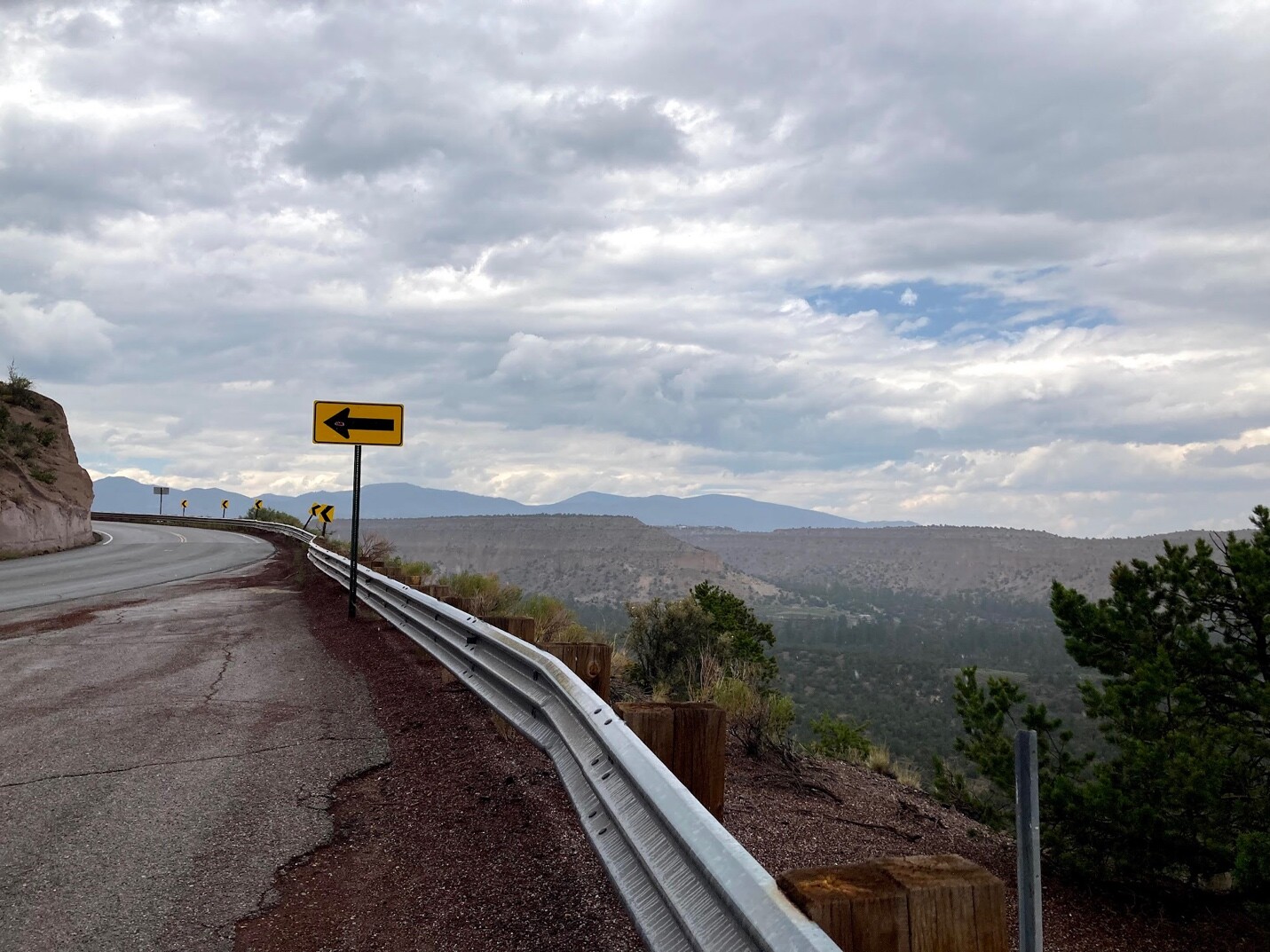

New Mexico State Route 502 Westbound toward Los Alamos. Image courtesy of author.
Only a few miles away from the WIPP site, the Guadalupe Mountains have been surrounded by a mythology and poetics of place that has persisted despite centuries of settler colonialism. As the imagined angry matriarchs of the future pointed out, there are no indigenous voices in the Sandia report, and the future scenarios included are a reflection of this absence. At the heart of the speculations about memory and governmental control that the Sandia report articulates are attempts to grapple with the fundamental impermanence of the American political project. The continued existence of the United States, and indeed the continued existence of the United States as an imperial, capitalist state, are seen as a prerequisite for the successful sequestration of nuclear waste in the containment site, and thus the security of the imagined future itself.
Between 1944 and 1996, somewhere around thirty million tons of uranium ore were extracted from mines on Navajo land. Further, both of the deep geological repositories proposed in the US have been bordering or directly within sacred Indigenous spaces.9 Navajo people worked in these mines, often without ventilation, and even when they didn’t, they lived in proximity and raised children near them. Although now closed, the dangers linger as radioactivity makes a nest of the landscape and people’s bodies. While nuclear knowledge lives in redacted documents and closed meetings at an administrative level, that knowledge is also embedded in the cellular structures of living things, in bodies and biomes, and will be for many generations to come.
The futures that fit within the white-knuckled grip of patriarchy and colonial militarization are as dystopian as they are limiting, and all of them take for granted that their present is immutable. But something inherent to the future is that it remains contested terrain, no more accessible to state actors than to anyone else. The global problem of nuclearity, and its intersections with questions of capitalism and imperial violence, will not be solved simply by adopting new narratives. But, perhaps, one small way to start is by reorienting ourselves toward the future, by changing social structures, and by recasting relationships with the landscape.
The real problem with WIPP is a problem inherent to the existence of irradiated material, which is that, as long as the world continues to produce nuclear waste, there is no sustainable, long-term solution for its safe storage and disposal. Beyond that, no matter how isolated and stable the waste at WIPP is, and no matter who serves as a custodian of the land, the site will eventually reach capacity and be sealed up. And when that occurs, in five or twenty or two hundred years, there will be the need to dig another hole, to build another repository, to find another pocket of land to sacrifice to nuclearity.
To truly keep the future safe from radiation, the only way forward is to dismantle the militarized nuclear infrastructure of the United States, and to chip away at the global networks of labor and capital that necessitate and sustain it. The WIPP project is a start to this, in that it demands engagement with the future on an unfamiliar timescale. The palimpsest of nuclearity brings the deep future into conversation with the present and the past, complicating what it means to isolate a threat. One way to understand the legacy of WIPP, then, is to recognize how it opens up space for a new kind of conversation about how society understands the ripple effects of an immortal technoscientific legacy seeping into the desert salt beds of New Mexico.
“Chihuahuan Desert,” The Darwin Trust of Edinburgh, ➝.
Algernon D’Ammassa, “’Incredible discoveries’: Oldest known human footprints in North America discovered at White Sands,” Las Cruces Sun News, September 23, 2021, ➝.
Samia Henni, Deserts Are Not Empty (New York: Columbia University Press, 2022).
“White Sands Test Center Services,” U.S. Army White Sands Missile Range, ➝.
“White Sands Test Center Services.”
See The Atomic Priesthood Project, ➝.
Allison Meier, “A nuclear warning designed to last 10,000 years,” Hyperallergic, July 21, 2016, ➝.
Stephen C. Hora, Detlof von Winterfeldt, and Kathleen M. Trauth, “Expert Judgement on Inadvertent Human Intrusion into the Waste Pilot Plant” (Sandia National Laboratories: Albuquerque, 1991), C-40.
“Abandoned Mines Cleanup,” United States Environmental Protection Agency, June 8, 2022, ➝.
Half-Life is a collaboration between e-flux Architecture and the Art Institute of Chicago within the context of its exhibition “Static Range” by Himali Singh Soin.

